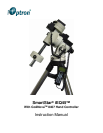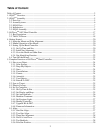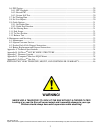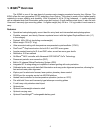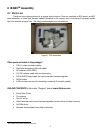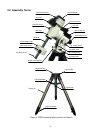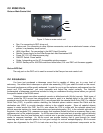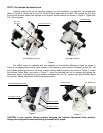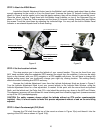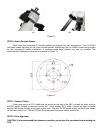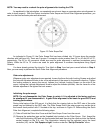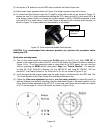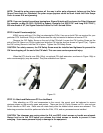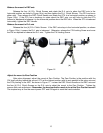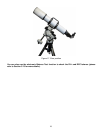
7
2.3. iEQ45 Ports
Ports on Main Control Unit
LED
Switch
LED
Switch
Figure 3. Ports on main control unit
• Dec: For connecting to DEC driver unit
• iOptron port: For connecting to other iOptron accessories, such as an electronic focuser, a laser
pointer, or a planetary dome control
• HBX (Hand Box): For connecting to the 8407 Hand Controller
• Reticle: Power supply for the Polar Scope dark field illumination LED
• Power DC 12V: AC adapter power plug
• ON/OFF Switch: Power switch
• Guide: Autoguiding port for ST-4 compatible guiding cameras
• RS232: Series port for ASCOM control and main board, R.A. and DEC unit firmware upgrade
Port on DEC Unit
The only port on the DEC unit is used to connect to the Dec port on main control unit.
2.4. Introduction
You have just purchased a telescope mount that is capable of taking you to a new level of
astronomy. No matter which telescope or optical tube assembly (OTA) you select to install on the mount,
the overall performance will be greatly enhanced. In order for you to get the optimum performance from the
mount and OTA combination, you must assemble and adjust the mount correctly. The following
fundamentals of telescope mounts are included to help you understand the big picture before you get into
the specific details of the iEQ45 mount.
Telescope mounts are either equatorial mounts or altitude-azimuth (Alt-Az) mounts. Both types of
mounts rotate the OTA around two perpendicular axes to point to a desired object in the night sky. An
equatorial mount has the right ascension (R.A.) axis aligned with the celestial North Pole (CNP), or celestial
South Pole (CSP), to provide rotation matching the celestial sphere rotation around the Earth and the
declination axis (DEC) to provide elevation relative to the celestial equator. Since all celestial objects
appear to rotate around the CNP, the R.A. axis allows the OTA to rotate with the celestial sphere and
provide accurate tracking for visual observations and astrophotography. R.A. is the celestial equivalent of
longitude. Like longitude, R.A. measures an angle that increases toward the East as measured from a zero
reference point on the celestial equator. An Alt-Az mount has a horizontal axis to provide vertical (altitude)
OTA movement from the local horizon and a vertical axis to provide horizontal (azimuth) OTA movement,
similar to compass headings. An Alt-Az mount can provide tracking that is good enough for visual
observing and short exposure photos, but not good enough for serious astrophotography. Alt-Az mounts
require star alignments for the OTA to track stars and they do not have adjustment components on the



